Lucid makes some pretty impressive electric cars. Its Air sedan can go up to 512 miles on a charge, making it the longest-range EV you can buy. Meanwhile, its Gravity SUV can get up to 450 miles of range, and handles like something half its size.
Despite the quality of Lucid’s products, the San Francisco-based automaker isn’t exactly doing well right now. Whether that’s the company’s fault or a reflection of greater market forces, well, it’s tough to say. Either way, it’s in a tight spot.
To help get itself out of that spot, Lucid has just revealed a much cheaper version of its Gravity SUV dubbed the Gravity Touring. The lower price point should maybe (hopefully?) be enough to keep the company going.
Lucid Isn’t Looking Too Hot This Year
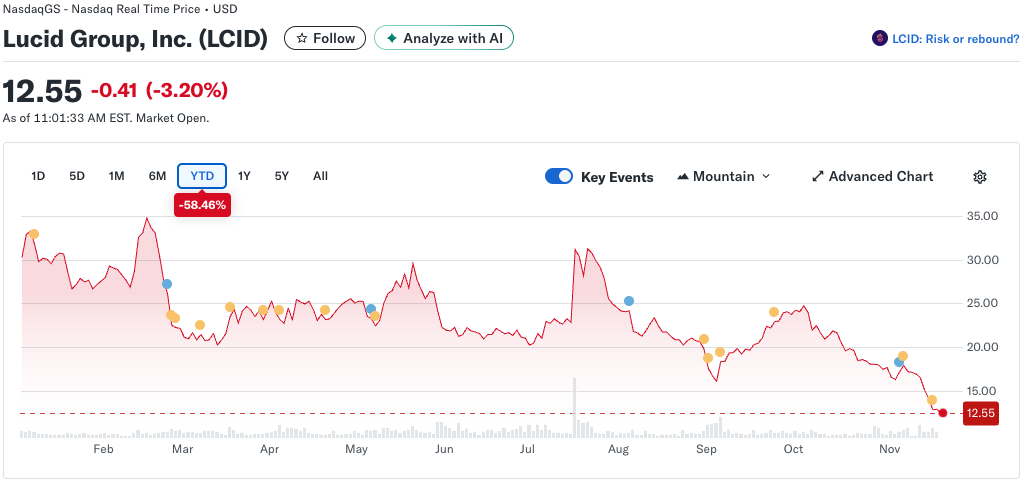
The past 11 months haven’t been kind to Lucid. Despite deliveries being up nearly 50% through the third quarter, its stock has fallen by 58% since the start of the year (and 86% since it went public in 2021). It issued a 1-for-10 reverse stock split in August, and earlier this week, the stock price hit an all-time low.
It’s not just the numbers. Peter Rawlinson, the company’s CEO, resigned suddenly back in February, and no one’s been permanently appointed to replace him (former chief operating officer Marc Winterhoff has been serving as interim CEO since). And earlier this month, Eric Bach, the company’s chief engineer for the past decade, left the company. Plus, Lucid’s vice president of quality, Jeri Ford, retired.
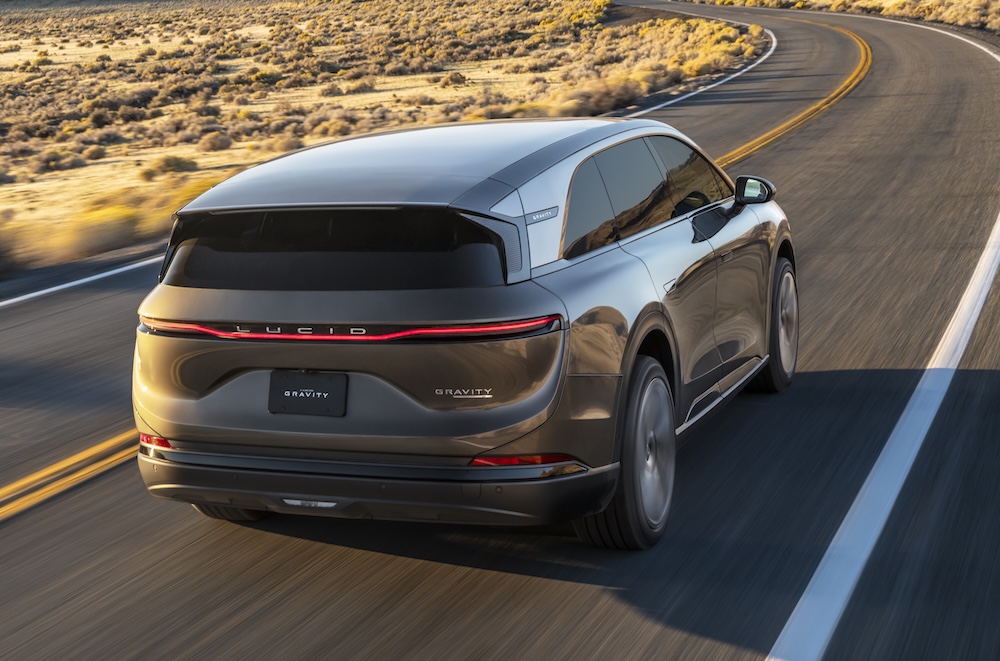
One thing Lucid has going for it is the seven straight quarters of record deliveries. But even that could be in danger thanks to the disappearance of the federal EV tax credit. Sales of electric vehicles exploded in September, leading up to the credit’s demise, before subsequently collapsing in October. Lucid doesn’t release monthly sales numbers, so it’s tough to tell how reliant the brand was on those credits. But going by industry trends, I’m not expecting any miracles here.
A Cheaper SUV Should Help, Right?
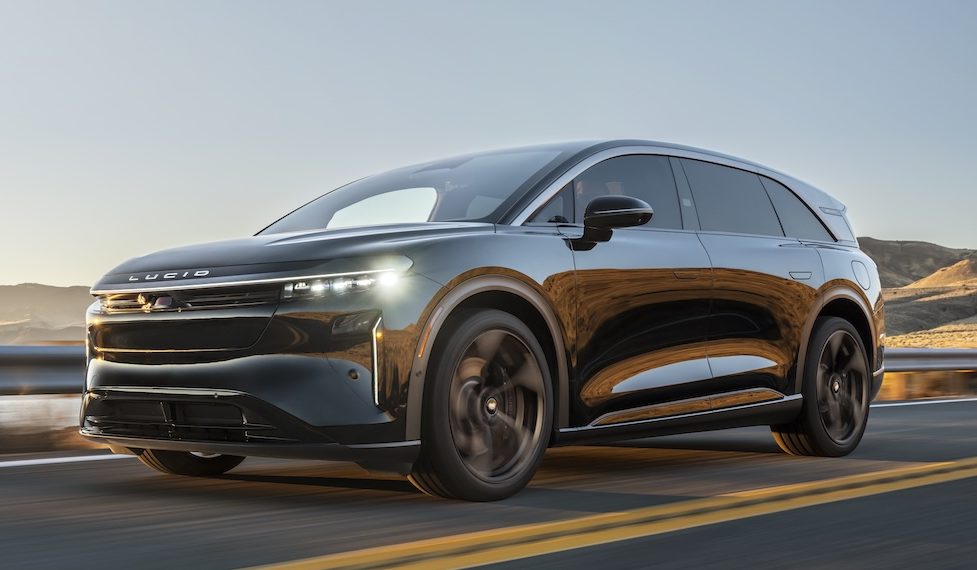
With affordability at the top of everyone’s mind, Lucid’s new Gravity Touring hopes to reach an audience that it couldn’t before. It starts at $79,900 plus an expected destination fee of $1,650, making it a full $15,000 than the next cheapest Gravity trim, the Grand Touring. And it’s finally available to order.
For that lower price point, you lose some battery capacity. The Touring model makes do with an 89-kWh pack, down from the Grand Touring’s 112 kWh unit. Range is cut from 450 miles to 337 miles, and output is down from 828 horsepower to 560 hp. While these numbers aren’t as mindblowing as the figures from the higher trims, they’re still pretty damn good for an SUV that can seat up to seven, depending on configuration.
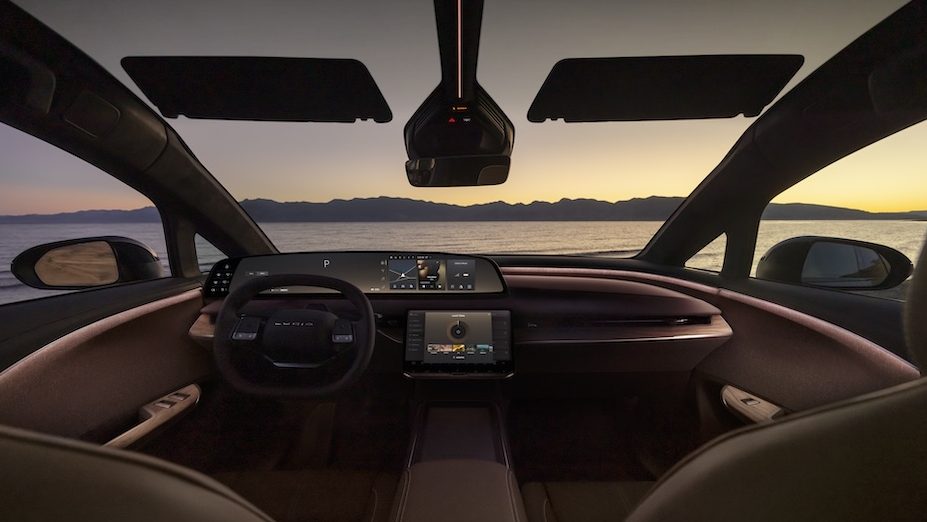
And it’s not like the Touring model is totally stripped out and devoid of features. It still gets a dual-motor, all-wheel drive setup and air suspension as standard. Inside, the Gravity Touring also gets that massive 34-inch curved 6K OLED display that spans nearly two-thirds of the dashboard.
Like all Gravitys (Gravities?), the Touring model utilises a NACS-style charging port and can charge at any of Tesla’s 25,000 Superchargers. On those chargers, it can charge at up to 220 kW. When connected to a big-boy 1000V DC fast charger, it can charge at up to 300 kW, adding 200 miles of charge in just 15 minutes.
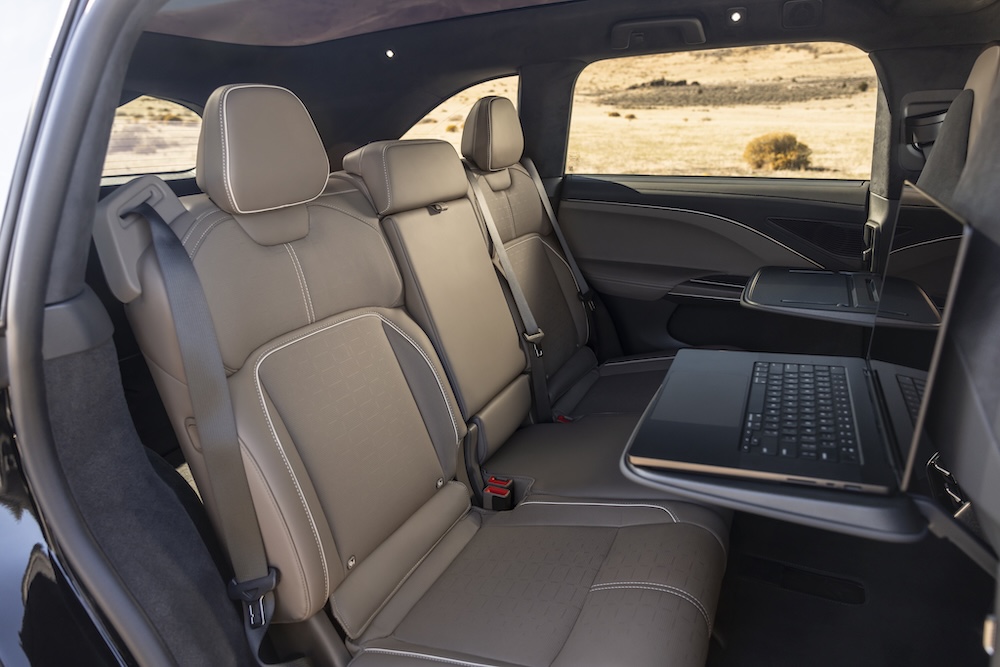
The Gravity Touring has the base Tesla Model X beat on price by about 20 grand, but the Tesla has more power and more range. Conversely, the Rivian R1S is a tiny bit cheaper than the Lucid, but lags behind on range by nearly 80 miles.
The Touring model should attract a few more buyers who would’ve gone elsewhere, but whether it will be able to help Lucid become financially sustainable is a tougher question to answer. It feels like America is about to be buying way more hybrids than pure EVs in the near future, meaning it might be necessary for the company to take even more drastic steps.
Top graphic image: Lucid









How many used but nice Miata’s can I get for 80,000 with one winter crapper included?
That’s perfectly cromulent. It goes from silly quick to fairly quick and definitely bladder busting to very likely bladder busting.
Do people cross shop the R1S and Model X? They’re very different vehicles. This seems like it will steal MX sales to me.
Sliding rear doors would increase my likelyhood of purchasing. I mean the shape of the thing looks like a van.
Oh…
Do I even wanna know how those visors are mounted? I’m scared it’ll crack that glass with me just looking at it.
Why? You crack your windshield every time you adjust your review mirror?
I was about to say these are most likely just glued to the windshield like older rearview mirrors.
These are pretty unattractive, but then so are the Tesla crossovers and those sell like hotcakes, so what do I know? The specs on the new lower model seem acceptable, 300+ miles and fast enough charging to get you to 80% in the time it takes you to pee and grab lunch (ideally not at the same time).
I’m not in the market for an 80k EV and I would have concerns about the long-term viability of the company at this point, given that the Saudis are basically the only reason it still exists today, but I would at least take a look at one of these.
Yeah, but the Tesla has those dumbass doors, too.
I just do not like how this thing looks. The Air is busy but it’s elegant. It looks futuristic while maintaining a traditional-ish profile that’s similar to some of the swooping German luxury sedans. This looks like the design brief was “give us a minivan that would look at home on the set of a 90s sci fi movie that’s supposed to take place in 2050.”
And before Van Gang crucifies me-I like minivans. I’ve been trying to convince my wife that we need one for years. But I don’t think anyone-myself included-wants an $80,000+ EV minivan that’s supposed to go toe to toe with luxury products. Especially when you could get a Rivian R1S for the same money. That thing looks rad.
My wife was on team 3 row SUV and I was going to begrudgingly gonna get one for her. I had pleaded with her to at least test drive a minivan but couldn’t get her to budge. She ended up getting “stuck” with a van as a rental car and suddenly, those test drives in the Pilot, Grand Highlander, CX90, etc weren’t all they cracked up to be.
I too like vans. This thing looks too much like a van, that is totally trying not to be a van. I don’t like that. The end result is just weird. If it had looked more like a van, that’d be fine by me.
This seems interesting but not sure how many rivian buyers it is going to sway with those looks. Staggered size wheels are also stupid on a non-performance vehicle.
Since this is the first Gravity below the $80k price cap, none of Gravity’s sales this year were eligible for tax credits, right? So it will be interesting if the loss of the credit does anything at all to their sales, as theoretically it shouldn’t matter.
You’d think it might even help! If it effectively increases the prices of a bunch of their competitors, it makes their products more competitive in the market, at least to the extent that they were being cross-shopped with cheaper, credit-eligible, competitors.
The tax credit had a 300k income cap, an 80k car is pretty expensive on a 300k income.
Not really. 80k on a 300k income is like ~26.6k on a 100k income, and I don’t think any of us would consider that outrageously expensive (you can barely buy a new car for that anymore). 300k per year is a _lot_ of money in most of the country.
Yet $300K isn’t a lot in the parts of the country where most buyers for this type of product live.
EV credit elimination will effect sales of Lucids minimally.
Just the sheer ratio of the modest ~7,500 against a 6-figure purchase price is almost immaterial. That’s less than the instant depreciation that happens when you sign the bill of sale.
Price cap and income didn’t matter if it was leased. The loss of credits won’t be as big of a hit to a company like Lucid, but it’s still a hit.